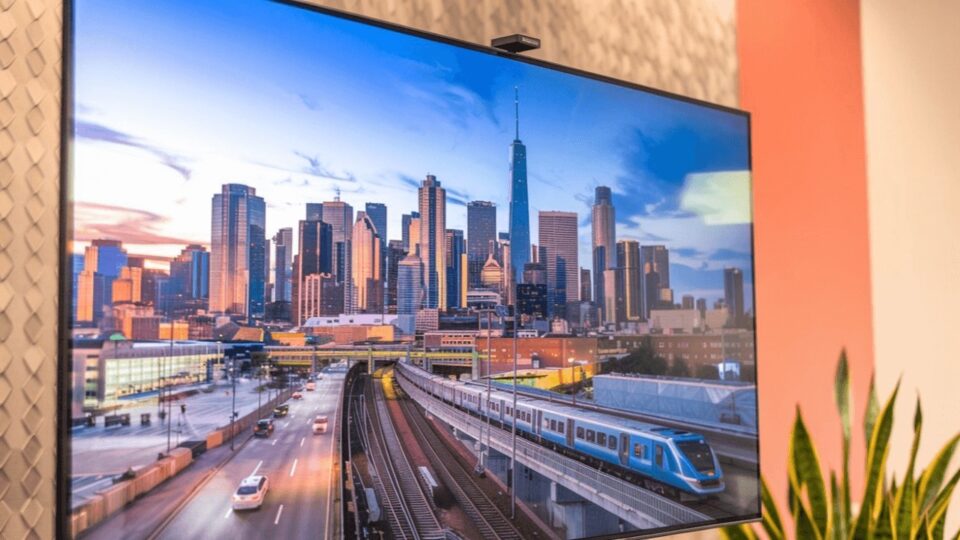A 4K short throw projector delivers an immersive viewing experience, but its performance heavily depends on the quality of the screen you pair it with. A projector is only as good as its screen, especially when it comes to ultra-short-throw (UST) models. Unlike traditional projectors, UST projectors require specific types of screens to optimize image quality, brightness, and color accuracy. In this blog, we’ll explore what makes a projector screen ideal for UST projectors, ensuring you get the best possible performance.
Why the Right Screen Matters for UST Projectors
UST projectors sit very close to the screen, often just a few inches away, and cast their images upward at a steep angle. This unique projection method means that not all screens can handle the light effectively. Choosing the wrong screen can lead to washed-out colors, poor contrast, and diminished viewing quality.
A good UST projector screen enhances brightness, prevents glare, and ensures the image looks as vivid as the projector intended. Whether you’re setting up a home theater or a presentation space, investing in the right screen is essential.
Key Features of a Good Projector Screen for UST Projectors
Ambient Light Rejection (ALR) Technology
Why It’s Important: UST projectors are often used in rooms with some level of ambient light. ALR screens are designed to reject light from other sources, such as windows or lamps, while reflecting the projector’s light directly toward the viewer.
The Benefit: Improved brightness and contrast, even in well-lit spaces.
Smooth Surface Material
Why It’s Important: The screen surface must be smooth and uniform to display high-resolution content accurately. For a 4K short throw projector, this ensures that every detail is visible.
The Benefit: Sharper images and better overall picture quality.
Ultra-Short-Throw Compatibility
Why It’s Important: UST projectors project light at an extreme angle, so the screen must be specifically designed to handle this. Regular screens may cause distortions or uneven brightness.
The Benefit: A distortion-free, balanced image across the entire screen.
High Gain Rating
Why It’s Important: Gain measures how much light the screen reflects back to the viewer. For UST projectors, a moderate gain rating (around 1.0 to 1.3) is ideal to prevent hotspots and ensure uniform brightness.
The Benefit: Even lighting and consistent image quality.
Durability and Maintenance
Why It’s Important: UST projector setups are often installed in living rooms or high-traffic areas. A durable screen resists damage from accidental touches and is easier to clean.
The Benefit: Longevity and low maintenance over time.
Screen Types to Consider for UST Projectors
- Fixed-Frame Screen: These are tensioned screens mounted on a rigid frame, offering a perfectly flat surface. They are ideal for permanent installations and deliver the best performance for UST projectors.
- Motorized Screens: These retractable screens are convenient for multipurpose rooms. Ensure the motorized screen is UST-compatible to avoid image distortion.
- Ambient Light Rejecting Screens: Specifically designed to enhance image quality in bright rooms, these screens are a must-have for UST projectors in non-dedicated home theater spaces.
Common Mistakes to Avoid When Choosing Projector Screens
- Using a Wall Instead of a Screen: Many people believe that projecting onto a white wall is enough. While this works for casual viewing, walls lack the reflective properties and texture uniformity required for a high-quality image, especially for a UST projector.
- Choosing the Wrong Screen Material: Not all screen materials are suitable for UST projectors. Regular screens may cause hotspotting or uneven brightness due to their inability to handle the steep projection angle.
- Ignoring Room Lighting Conditions: Failing to account for ambient light can lead to poor viewing experiences. Even the best UST projector will struggle without the support of an ALR screen in brightly lit environments.
Why Invest in a High-Quality Screen?
A projector and screen work together as a team. While a 4K short throw projector is designed to deliver crisp, vibrant images, its potential can only be fully realized with the right screen. Skimping on the screen can compromise the viewing experience, leading to disappointment after investing in high-quality projector technology.
Additionally, pairing your projector with a screen optimized for UST projection protects your investment. It ensures that you get the maximum performance and longevity from your setup, making it worth every penny.
Final Tips for Selecting the Perfect Screen
- Measure Your Space: UST projectors produce large images from short distances, so ensure the screen fits your room dimensions and viewing angles.
- Consider Your Usage: For permanent home theaters, fixed-frame screens are ideal. For multipurpose spaces, motorized ALR screens offer flexibility.
- Check Compatibility: Ensure the screen you choose is specifically designed for UST projectors to avoid image distortion or brightness inconsistencies.
Final Thought
Choosing the right screen for your UST projector is just as important as selecting the projector itself. A high-quality screen ensures your projector performs at its best, delivering bright, sharp, and vibrant images every time.
Whether you’re creating a home theater, upgrading a conference room, or enhancing your classroom setup, investing in the right projector screens tailored to UST technology is a decision you won’t regret. Ensure your viewing experience is nothing short of spectacular with a screen that complements your projector’s capabilities.

